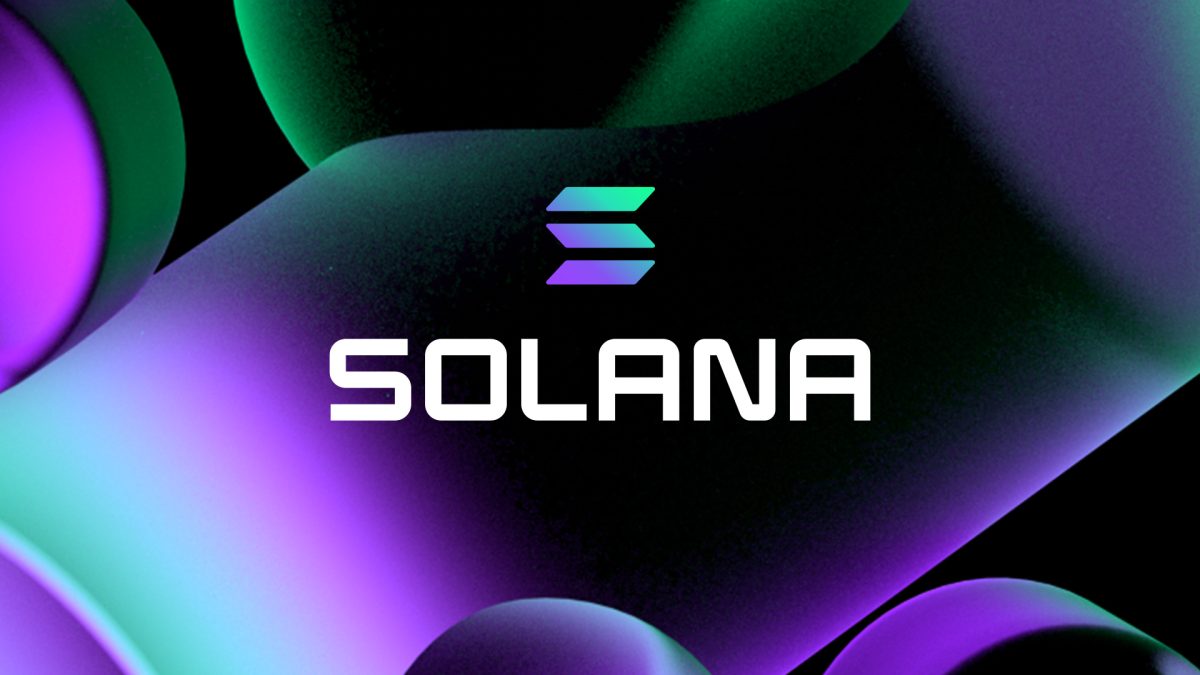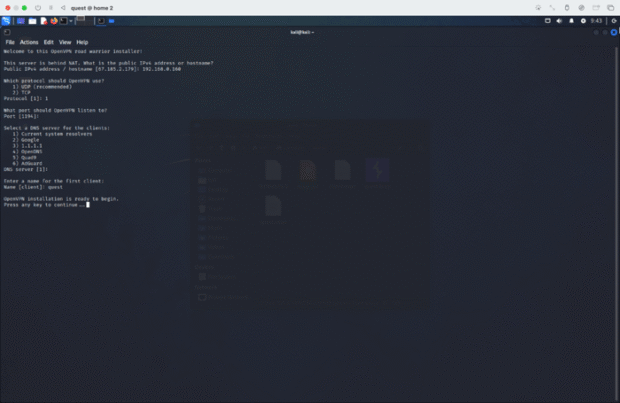
Solana, a blockchain known for its high-speed transactions and low fees, recently completed a significant software upgrade aimed at enhancing network efficiency. This upgrade has led to remarkable revenue increases for Solana validators, now generating over $30 million in daily revenue. With this surge in validator earnings, investors are setting their sights on an ambitious price target of $200 for SOL. Let’s dive into how these updates are influencing Solana’s ecosystem, validator profitability, and investor confidence.
Solana’s Recent Software Upgrade and Validator Benefits
The latest update focuses on streamlining transaction processing, reducing network latency, and further optimizing the proof-of-stake consensus mechanism. Validators, who are responsible for maintaining the network by verifying transactions and creating new blocks, are now reaping substantial rewards from these improvements. The increase in validator revenue can be attributed to:
- Enhanced Transaction Throughput: The upgrade has increased Solana’s processing capacity, allowing validators to handle more transactions per second.
- Fee Optimization: By reducing network congestion, the update has lowered the costs of transactions, making Solana an even more attractive platform for high-frequency transactions.
Due to these changes, Solana validators now report a daily income exceeding $30 million, a significant boost that underscores the economic potential of participating in the network’s validation process.
What This Means for SOL Investors
The positive impact of the software update on Solana validators has not gone unnoticed by investors. With the boost in validator revenue, there’s a growing sentiment that SOL, currently one of the top-performing assets in the crypto market, could see further price appreciation. Many investors are hopeful for a new milestone: a $200 SOL price.
Factors Driving SOL’s Price Potential:
- Increased Validator Earnings: High validator revenue signals a robust and profitable network, attracting both retail and institutional investors.
- Enhanced Network Stability: Improved stability and efficiency position Solana as a more viable competitor to Ethereum, attracting developers and projects to the platform.
- Positive Market Sentiment: The software upgrade has strengthened confidence in Solana’s ability to scale and deliver consistent improvements.
How Does Solana Compare to Ethereum?
Solana’s advancements have reignited the Ethereum vs. Solana debate. With this recent update, Solana is positioning itself as a cost-effective alternative to Ethereum, which faces higher transaction fees and scaling challenges. While Ethereum has its upcoming updates, Solana’s ability to adapt and grow quickly has drawn attention to its long-term potential.
Learn More:
- Read more on Solana’s software update and how it affects validator revenue.
- For more details on the Ethereum and Solana comparison, check out this comprehensive guide.
Future Outlook: Will SOL Reach $200?
With Solana validators now enjoying an enhanced revenue stream, the ecosystem is well-positioned for further growth. The potential for SOL to reach $200 seems increasingly plausible, especially with continued development and network expansion. However, achieving this target will require sustained market momentum and investor confidence in the blockchain’s long-term potential.
Investor Takeaway: The recent Solana update has positioned the blockchain as a leader in transaction efficiency and validator profitability. With increased revenue, strong community support, and a roadmap focused on scalability, SOL is likely to remain in the spotlight for the foreseeable future.
This revenue boost is a significant milestone for the Solana network and provides SOL investors with renewed optimism for future growth. For those interested in further details, CoinTelegraph’s coverage on Solana provides an in-depth look at how validator revenue impacts overall blockchain health.
#TrendingNow #InspirationDaily #ExploreMore #LifestyleTips #InTheNews #DigitalAge #Insights #Innovation #BehindTheScenes #WorldView
Read more on our more trending special page
About the author
Defend the Airport
[ad_1] Every day, millions of passengers depend on a vast, complex airport ecosystem to get from Point A to Point B. From airline check-ins and baggage handling to air traffic control and terminal operations, the aviation sector is an intricate web of interconnected third-party providers, technologies, and stakeholders. In this high-stakes environment, a cybersecurity breach is not a single point of failure, it’s a ripple effect waiting to happen. Cyber Threats Aren’t Just IT Problems – They’re Operational Crises When people think about airport cybersecurity, they often picture network firewalls at airline headquarters or secure software for booking systems. But the real threat landscape is far broader and far more vulnerable. If a catering supplier is hit with ransomware, the aircraft turnaround slows. If the baggage conveyor system is compromised, luggage piles up, delaying departures. If the security contractor experiences […]
Navpreet Pannu June 4, 2025
Securing LLMs Against Prompt Injection Attacks
[ad_1] Introduction Large Language Models (LLMs) have rapidly become integral to applications, but they come with some very interesting security pitfalls. Chief among these is prompt injection, where cleverly crafted inputs make an LLM bypass its instructions or leak secrets. Prompt injection in fact is so wildly popular that, OWASP now ranks prompt injection as the #1 AI security risk for modern LLM applications as shown in their OWASP GenAI top 10. We’ve provided a higher-level overview about Prompt Injection in our other blog, so in this one we’ll focus on the concept with the technical audience in mind. Here we’ll explore how LLMs can be vulnerable at the architectural level and the sophisticated ways attackers exploit them. We’ll also examine effective defenses, from system prompt design to “sandwich” prompting techniques. We’ll also discuss a few tools that can help […]
Navpreet Pannu May 14, 2025
LLM Prompt Injection – What’s the Business Risk, and What to Do About It
[ad_1] The rise of generative AI offers incredible opportunities for businesses. Large Language Models can automate customer service, generate insightful analytics, and accelerate content creation. But alongside these benefits comes a new category of security risk that business leaders must understand: Prompt Injection Attacks. In simple terms, a prompt injection is when someone feeds an AI model malicious or deceptive input that causes it to behave in an unintended, and often harmful way. This isn’t just a technical glitch, it’s a serious threat that can lead to brand embarrassment, data leaks, or compliance violations if not addressed. As organizations rush to adopt AI capabilities, ensuring the security of those AI systems is now a board-level concern. In this post we’ll provide a high-level overview of prompt injection risks, why they matter to your business, and how Security Innovation’s GenAI Penetration […]
Navpreet Pannu May 9, 2025
Setting Up a Pentesting Environment for the Meta Quest 2
[ad_1] With the advent of commercially available virtual reality headsets, such as the Meta Quest, the integration of virtual and augmented reality into our daily lives feels closer than ever before. As these devices become more common, so too will the need to secure and protect the data collected and stored by them. The intention of this blog post is to establish a baseline security testing environment for Meta Quest 2 applications and is split into three sections: Enabling Developer Mode, Establishing an Intercepting Proxy, and Injecting Frida Gadget. The Quest 2 runs on a modified version of the Android Open Source Project (AOSP) in addition to proprietary software developed by Meta, allowing the adoption of many established Android testing methods. Enabling Developer Mode The first step of setting up a security testing environment on the Quest is to […]
Navpreet Pannu April 28, 2025
Earn the US Cyber Trust Mark and Unlock New IoT Growth Opportunities
[ad_1] As an IoT product manufacturer, building consumer trust in the security of your connected devices is critical for driving sales and staying competitive. Fortunately, the Federal Communications Commission (FCC) has introduced a new program to help - the US Cyber Trust Mark. The Cyber Trust Mark is a new voluntary labeling program that is obtained by demonstrating the cybersecurity of your IoT products. By earning this seal of approval, you can demonstrate to your customers that your devices meet rigorous security standards and can be trusted to protect their personal data and connected home. Retailers like Best Buy and Amazon will be collaborating with the FCC to educate consumers on this new program and increase public demand for the Cyber Trust Mark. But achieving the Cyber Trust Mark isn't a simple process. That's where Security Innovation, a Bureau Veritas […]
Navpreet Pannu April 6, 2025
The Value of OT Penetration Testing
[ad_1] With the increasing cyber threats targeting operational technology (OT) environments, it's more important than ever to proactively assess and strengthen the security of your Industrial Control Systems (ICS). One of the most effective ways to do this is through an OT penetration test. What is an OT Penetration Test? An OT penetration test is a comprehensive security assessment that simulates real-world cyber-attacks against your ICS environment. Experienced security professionals, with deep expertise in both IT and OT systems, will attempt to gain unauthorized access and exploit vulnerabilities within your industrial control networks and devices. The team will provide you with a realistic understanding of your ICS security posture and the potential impact of a successful attack. The Benefits of OT Penetration Testing Uncover Hidden Vulnerabilities: Pen testers will identify vulnerabilities and misconfigurations that may have been overlooked by traditional […]
Navpreet Pannu April 6, 2025
Related
Defend the Airport
[ad_1] Every day, millions of passengers depend on a vast, complex airport ecosystem to get from Point A to Point B. From airline check-ins and baggage handling to air traffic control and terminal operations, the aviation sector is an intricate web of interconnected third-party providers, technologies, and stakeholders. In this high-stakes environment, a cybersecurity breach is not a single point of failure, it’s a ripple effect waiting to happen. Cyber Threats Aren’t Just IT Problems – They’re Operational Crises When people think about airport cybersecurity, they often picture network firewalls at airline headquarters or secure software for booking systems. But the real threat landscape is far broader and far more vulnerable. If a catering supplier is hit with ransomware, the aircraft turnaround slows. If the baggage conveyor system is compromised, luggage piles up, delaying departures. If the security contractor experiences […]
Navpreet Pannu June 4, 2025
Securing LLMs Against Prompt Injection Attacks
[ad_1] Introduction Large Language Models (LLMs) have rapidly become integral to applications, but they come with some very interesting security pitfalls. Chief among these is prompt injection, where cleverly crafted inputs make an LLM bypass its instructions or leak secrets. Prompt injection in fact is so wildly popular that, OWASP now ranks prompt injection as the #1 AI security risk for modern LLM applications as shown in their OWASP GenAI top 10. We’ve provided a higher-level overview about Prompt Injection in our other blog, so in this one we’ll focus on the concept with the technical audience in mind. Here we’ll explore how LLMs can be vulnerable at the architectural level and the sophisticated ways attackers exploit them. We’ll also examine effective defenses, from system prompt design to “sandwich” prompting techniques. We’ll also discuss a few tools that can help […]
Navpreet Pannu May 14, 2025
LLM Prompt Injection – What’s the Business Risk, and What to Do About It
[ad_1] The rise of generative AI offers incredible opportunities for businesses. Large Language Models can automate customer service, generate insightful analytics, and accelerate content creation. But alongside these benefits comes a new category of security risk that business leaders must understand: Prompt Injection Attacks. In simple terms, a prompt injection is when someone feeds an AI model malicious or deceptive input that causes it to behave in an unintended, and often harmful way. This isn’t just a technical glitch, it’s a serious threat that can lead to brand embarrassment, data leaks, or compliance violations if not addressed. As organizations rush to adopt AI capabilities, ensuring the security of those AI systems is now a board-level concern. In this post we’ll provide a high-level overview of prompt injection risks, why they matter to your business, and how Security Innovation’s GenAI Penetration […]
Navpreet Pannu May 9, 2025
Setting Up a Pentesting Environment for the Meta Quest 2
[ad_1] With the advent of commercially available virtual reality headsets, such as the Meta Quest, the integration of virtual and augmented reality into our daily lives feels closer than ever before. As these devices become more common, so too will the need to secure and protect the data collected and stored by them. The intention of this blog post is to establish a baseline security testing environment for Meta Quest 2 applications and is split into three sections: Enabling Developer Mode, Establishing an Intercepting Proxy, and Injecting Frida Gadget. The Quest 2 runs on a modified version of the Android Open Source Project (AOSP) in addition to proprietary software developed by Meta, allowing the adoption of many established Android testing methods. Enabling Developer Mode The first step of setting up a security testing environment on the Quest is to […]
Navpreet Pannu April 28, 2025
Kiren Rijiju: Why Earth Sciences minister Rijiju is upset with this European IT company |
[ad_1] Earth Sciences Minister Kiren Rijiju is reportedly upset with the French IT company Atos. Reason is said to be delay in the delivery of two supercomputers by the French company to Indian weather forecasting institutes. According to a report in news agency PTI, the Earth Sciences Ministry had ordered two supercomputers worth $100 million from French firm Eviden, of the Atos Group, last year to enhance the computing capabilities of its institutions -- the National Centre for Medium Range Weather Forecasting (NCMRWF) and the Indian Institute of Tropical Meteorology (IITM)."I am more upset because the target we set was December. The Union Cabinet had already approved purchasing the supercomputer. We have only four petaflop capacity. We want to install up to 18 petaflop capacity," Rijiju told PTI in a video interview.He said that the French company ran into some […]
Harshit bharti April 7, 2025
Former Activision boss reportedly wants to buy TikTok
[ad_1] Bobby Kotick, the former head of Activision Blizzard, is reportedly considering buying TikTok, as the app could be banned in the United States. The Wall Street Journal reports that Kotick has talked to ByteDance, the company that owns TikTok, about buying the app, which could cost hundreds of billions of dollars.This comes as US lawmakers introduce a new bill that would make ByteDance sell TikTok within six months or stop it from being available in US app stores.President Joe Biden has said he would approve the bill if it passes in Congress.The Wall Street Journal report adds that Kotick, the head of OpenAI, Sam Altman, discussed teaming up to buy TikTok at a dinner last week. Kotick's interest in TikTok follows a rough end to his 30 years leading Activision Blizzard, which Microsoft acquired last year. The company faced […]
Harshit bharti April 7, 2025









